PC Specialist Defiance V RTX Review
September 12, 2019 | 12:00
Companies: #intel #nvidia #pc-specialist
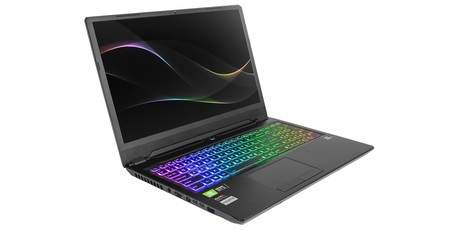
Manufacturer: PC Specialist
UK price (as reviewed): £1,899.00
US price (as reviewed): N/A
While the focus when it comes to thin and light laptops is currently Intel’s 10th Gen CPUs, it’s currently the 9th Gen processors that are powering gaming laptops, and this looks like it could be the case for some time, demonstrated by numerous freshly announced models at this year’s IFA convention just last week. Most typically, these CPUs will be paired with Nvidia GTX or, in the most powerful laptops, Nvidia RTX GPUs, and it’s this combination of Intel 9th Gen and Nvidia RTX that we’re looking at today in the PC Specialist Defiance V RTX.
Two things are immediately interesting here: the screen size and the pricing. After all, 16.1” is by no means a standard among laptops. As for pricing, while £1,899 may seem expensive, the fact that PC Specialist is using the RTX 2080 Max-Q GPU actually makes it stonking good value on the surface. The last laptop we saw using the same GPU was the £3,000 ROG Zephyrus S GX701 (admittedly an extreme example), and the 9th-Gen-based Gigabyte Aero 15 Classic-SA came in at around £1,800 but only featured the GTX 1660 Ti. They’re both premium laptop designs, mind, so it’ll be interesting to see if PC Specialist has sacrificed a little too much to reach so low a price point.

The Defiance V RTX is actually PC Specialist’s adaption of the P960EN chassis from Clevo, which is the OEM of the laptop shell. Being a more off-the-shelf type design rather than a highly custom one like a Razer, Asus, or Dell laptop is part of what keeps the pricing low. Note also that even though PC Specialist offers fully custom laptops, the spec you see in this review is offered at a special price that doesn’t allow for spec customisation. Hopefully, then, what’s inside has been chosen well. First, though, let’s look at the physical design.
Being a 16.1” laptop helps to keep the width and depth down relative to a 17” laptop; PC Specialist is able to shave around 20mm off both dimensions compared to the ROG Zephyrus S GX701, which is one of the sleekest 17” units around. A sub-20mm depth is also decent, and a weight of just under 2.3kg means occasional portability shouldn’t pose much challenge.
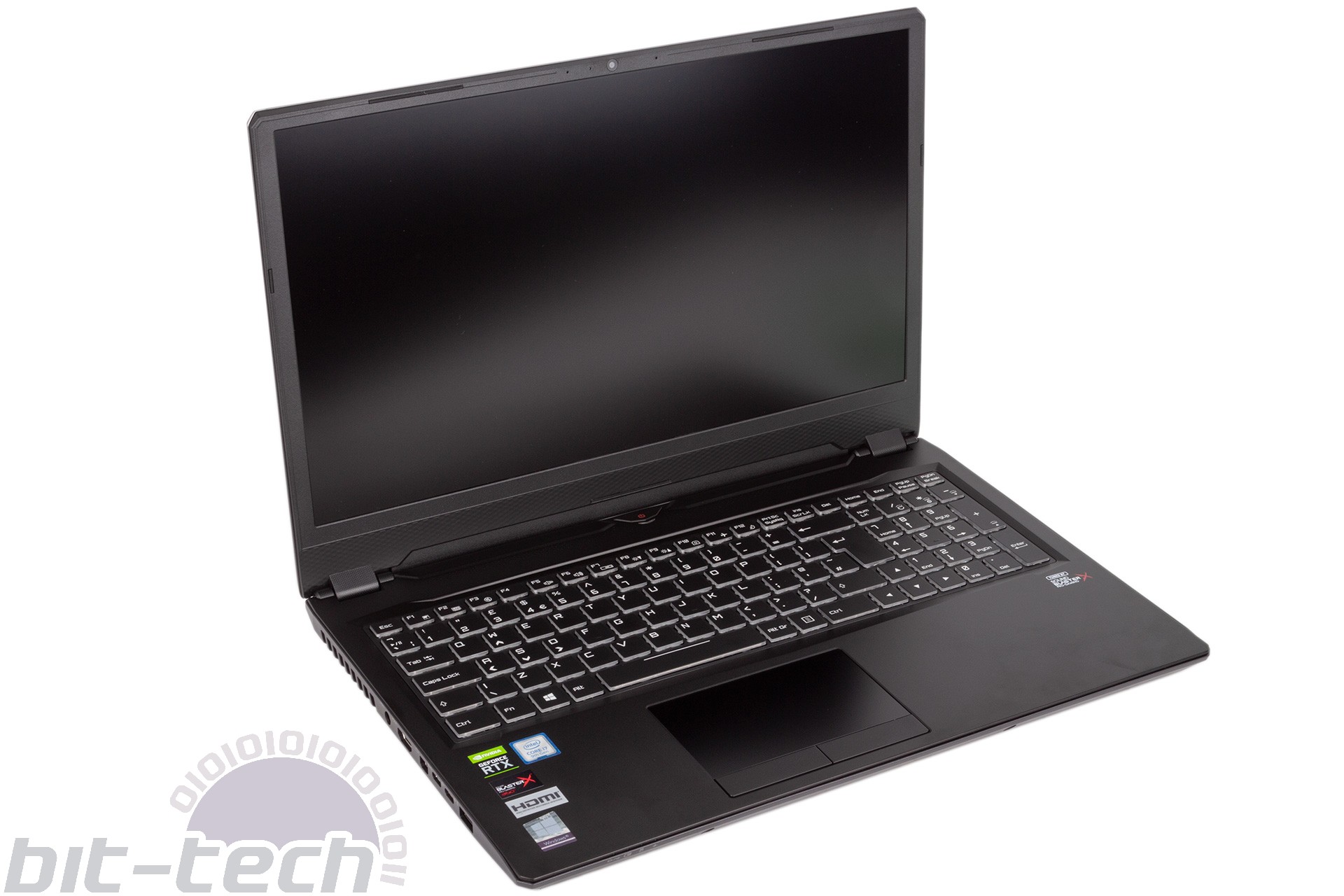
With the laptop open, we find fairly thin bezels surrounding the screen, and thankfully, PC Specialist has managed to include the basic 720p webcam into the top bezel instead of turning it into a nosecam. Build quality is acceptable; there is some flex here and there, but overall it’s solid enough.
That 16.1” screen is a TN panel with a 1,920 x 1,080 resolution and a fixed refresh rate up to 144Hz. This, to us, is the sweet spot for gaming laptops; higher resolutions don’t often add much from a productivity standpoint unless you like your icons and text teeny tiny, but they place much greater stress on the GPU when gaming. With this screen size, 1080p will still look very sharp, and it’ll allow the GPU to utilise that high refresh rate, which is something you’ll definitely notice.
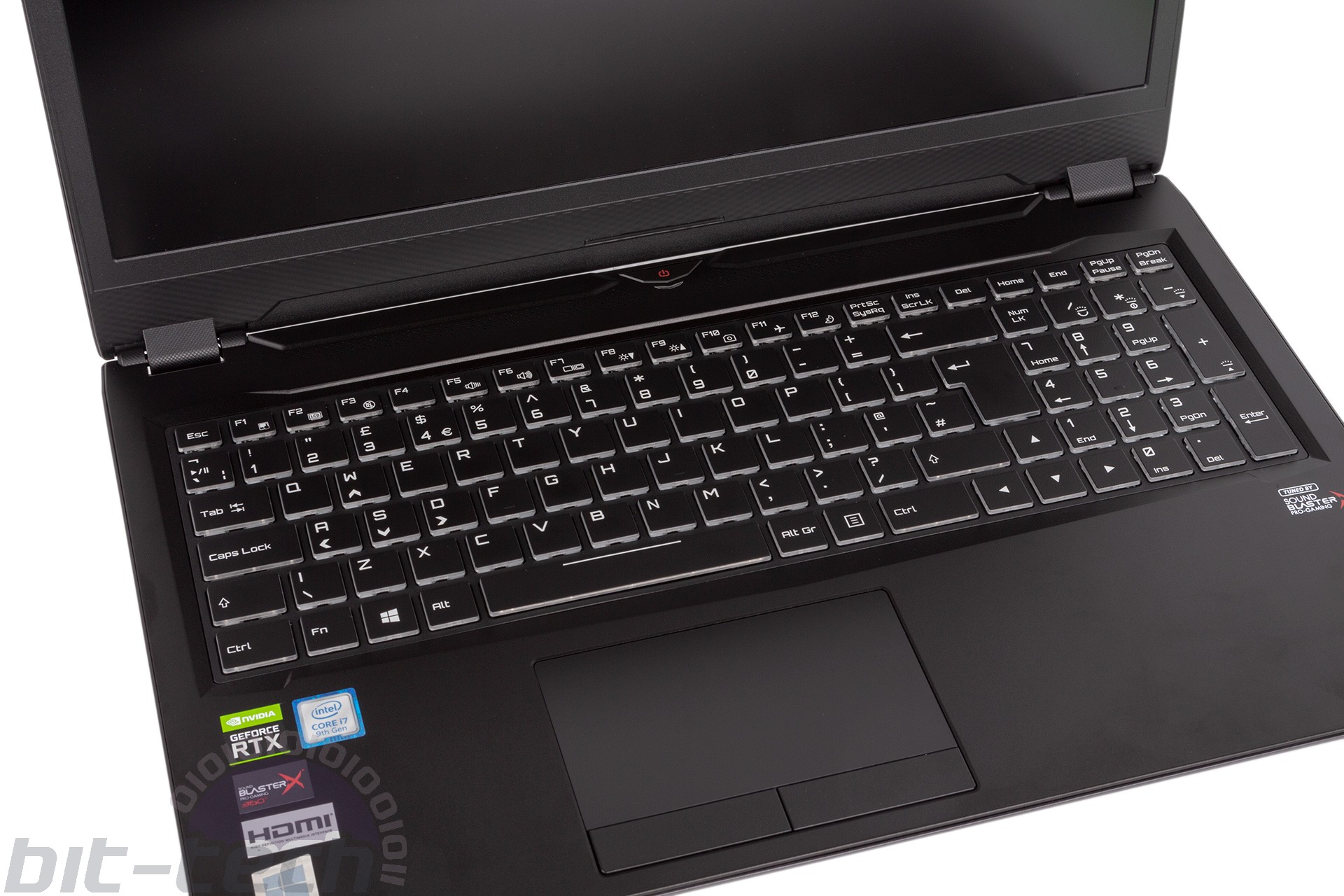
The trackpad and keyboard are both functional and fine to use but also not outstanding, and the font choice isn’t to our taste. The laptop is wide enough to allow an almost full numpad, the only real difference being the half-size 0 key that’s done to make way for full-size arrow keys. This is one of those situations that just takes getting used to, but it may annoy you more if you use the numpad a lot for data entry, for example. You get some basic RGB lighting on the keyboard that’s bright and punchy too; this can be dimmed and disabled with ease.
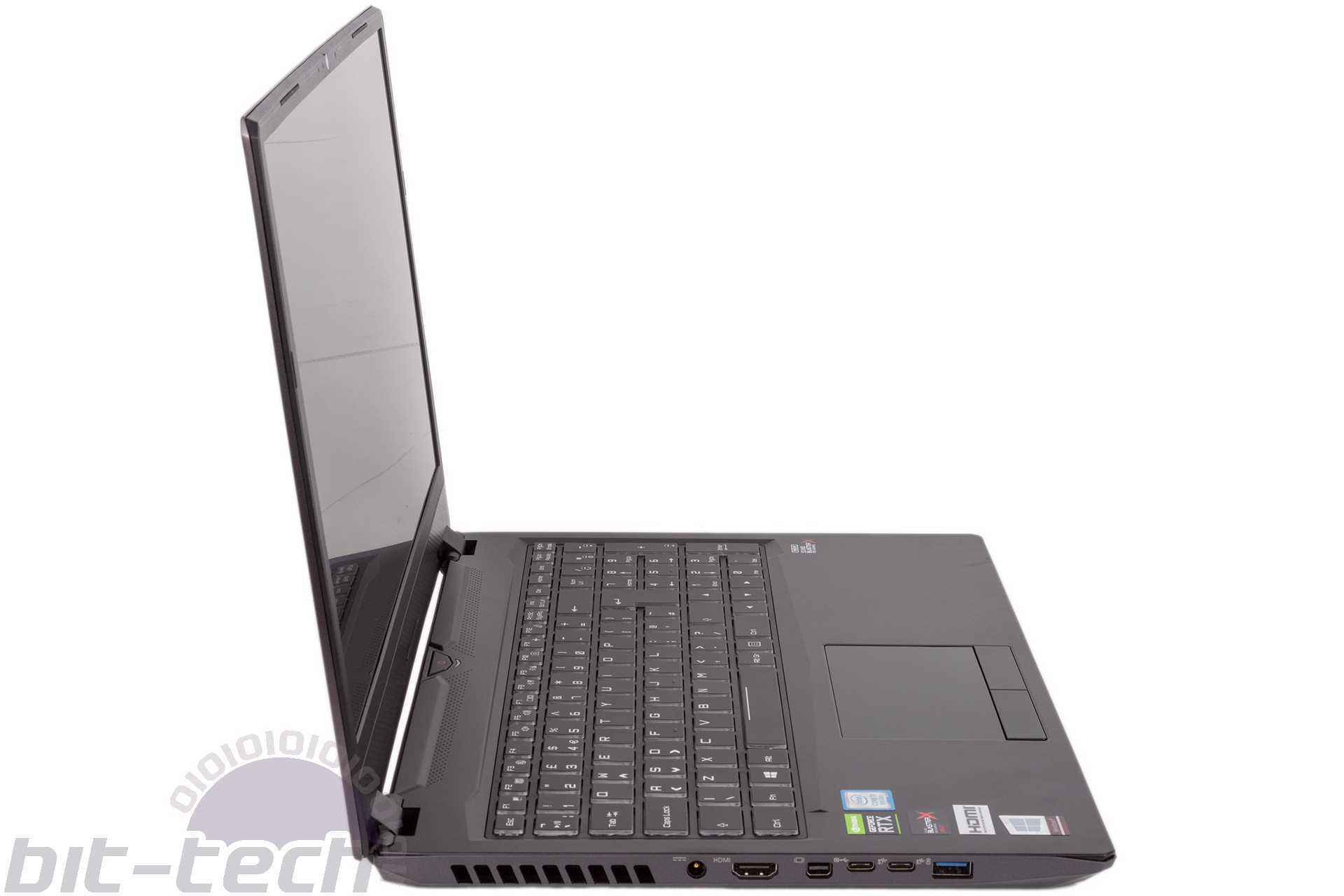
All the various ports are side-facing and thus easily accessed. On the left, the centrally placed power input feels like it can get in the way too often, but otherwise the layout is acceptable. A solo HDMI is joined by a mini-DisplayPort 1.3, two USB-C ports with full 3.1 Gen 2 speeds (and one with DP 1.3 over USB-C), and a single regular USB 3.0 port (also called USB 3.1 Gen 1). The opposite side hosts a 6-in-1 card reader, gigabit Ethernet port, separate headphone and microphone 3.5mm jacks that tap into the basic dual-channel audio, and another USB 3.0 header. Intel’s Wireless-AC 9260 module provides support for Wi-Fi 5 (802.11ac) and Bluetooth 5.0.
Inside, the Core i7-9750H is the new standard for gaming laptops. Six cores and 12 threads make it a decent multi-threaded all-rounder, and its 2.6GHz base and 4.5GHz Turbo speeds are 400MHz higher than the outgoing Core i7-8750H that’s served similar units well in years past. Actual boost speeds will depend on the workload and cooling configuration, however. The CPU is sensibly matched with 16GB (2 x 8GB) Corsair DDR4. The CPU can support 2,666MHz memory, but PC Specialist has opted for 2,400MHz. Thankfully, this is unlikely to make much if any difference outside of very specific benchmarks and workloads.

The RTX 2080 Max-Q GPU shares the same core count as its desktop brother, but the tight 80W power limit that comes with this mobile-oriented Max-Q design sees clock speeds dropped from 1,515MHz base/1,710MHz boost to just 735MHz/1,095MHz, and the 8GB of GDDR6 is slowed from 14Gbps to 12Gbps, so even if PC Specialist has exceptional cooling enabling high boosting, you’re not going to see desktop-class performance. Nevertheless, this is one of the very best GPUs available for laptops and the fastest GPU available in Max-Q form within the GeForce family, so for portable performance it should be hard to beat.
Windows 10 Home is installed on a 500GB Samsung 970 Evo Plus SSD that’s backed up by a 1TB 2.5” HDD – a nice combination. A secondary M.2 slot is available inside too (and you even get a thermal pad to help cool it), but you can’t access this or the 2.5” bay or the memory modules without also removing the keyboard, so a few points lost there from a maintenance and upgrade perspective.

The underside is heavily ventilated and is the primary intake area for the triple-fan cooling solution, with heat shared between the CPU and GPU thanks to connecting heat pipes. Exhaust airflow is directed out of the back via large vents.
The 62Wh battery is a little on the low side for this size of laptop, but that’s a common sacrifice when you choose to have a 2.5” drive. The 180W power brick will ensure both CPU and GPU are free to run up to their maximum wattages without issue.
The laptop comes with a free Office 365 trial but is largely free of useless software. More pertinently, it ships with a three-year warranty. Sadly, the collect and return portion (free shipping to and from the repairs centre) is only covered for one month, and parts only for one year, but PC Specialist does have upgrade options here if you desire additional peace of mind.
Specifications (as reviewed)
- CPU Intel Core i7-9750H (2.6GHz base, 4.5GHz Turbo)
- CPU threads 12 (hexa-core with Hyper-Threading)
- Memory 16GB (2 x 8GB) Corsair 2,400MHz DDR4
- Graphics Nvidia GeForce RTX 2080 Max-Q 8GB
- Storage 1 x 500GB Samsung 970 Evo Plus M.2 PCIe NVMe SSD, 1 x 1TB Seagate 2.5" HDD
- Screen 16.1" TN, 1,920 x 1,080, 144Hz
- Dimensions (mm) 380 x 252 x 19.9 (W x D x H)
- Networking Intel AC-9260 (Wi-Fi 5 / 802.11ac up to 1.73Gbps), Bluetooth 5.0
- Audio Dual-channel
- Keyboard backlighting Yes (RGB)
- Battery Li-Ion, 62Wh
- Webcam HD
- Weight 2.27kg
- Operating system Windows 10 Home 64-bit
- Ports 2 x USB 3.1 Type-C (1 w/ DisplayPort 1.3 over USB-C), 2 x USB 3.0, 1 x HDMI, 1 x mini-DisplayPort 1.3, 1 x Gigabit LAN, 1 x headphone, 1 x microphone, 1 x 6-in1 SD card reader
- Warranty Three years (one month collect & return, one year parts, three years labour)

MSI MPG Velox 100R Chassis Review
October 14 2021 | 15:04

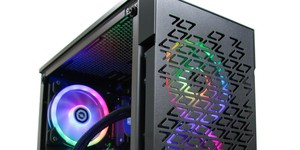
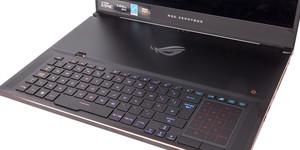





Want to comment? Please log in.